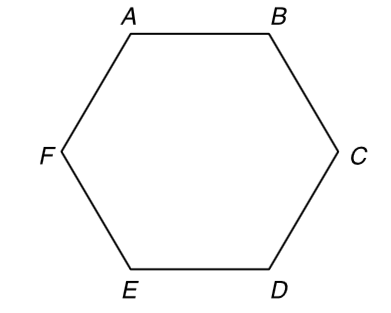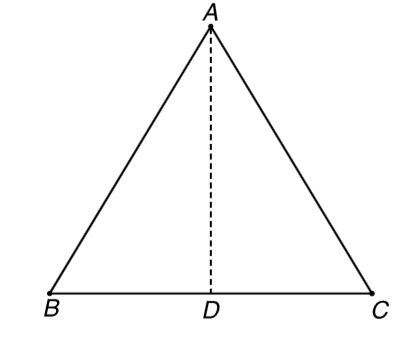Six ants simultaneously stand on the six vertices of a regular octahedron with each ant at a different vertex. Simultaneously and independently, each ant moves from its vertex to one of the four adjacent vertices, each with equal probability. What is the probability that no two ants arrive at the same vertex?
5256
211024
11512
231024
The correct Answer is:B
Topper's Solved these Questions
Similar Questions
An ant is situated at the vertex A of the triangle ABC. Every movement of the ant consists of moving to one of other two adjacent vertices from the vertex where it is situated. The probability of going to any of the other two adjacent vertices of the triangle is equal. The probability that at the end of the fourth movement the ant will be back to the vertex A, is:
View SolutionLet A B C D be the vertices of a regular tetrahedron each of whose edges measures 1 meter. A bug starting from vertex A observes the following rules at each vertex it chooses one of the three edges meeting at that vertex each edge being equally likely to be chosen and crawls along that edge to the vertex at its opposite end. Let p= 729 be the probability that the bug is at vertex A when it has crawled exactly 7 meters. The value of n is
View Solution
Knowledge Check
A rectangular farm house has a 1km difference between its sides. Two farmers simultaneously leave one of the vertex of the rectangle for a point at the opposite vertex. One farmer crosses the farmhouse along its diagonal and other walks along the edge. The speed of each farmer is 4km/hr. If one of them arrives half an hour earlier then the other then the size of farmhouse is .
A12km×13kmB4km×5kmC3km×4kmDNone of theseFour identical oranges and six distinct apples (each a different variety) are distributed randomly into five distinct boxes. The probability that each box gets a total of two objects is .
A813109375B16221875C32343750D15121875.
1. An examination consists of 8 questions in each of which one of the 5 alternatives is the correctde cItat a candidate who has done no preparatory work chooses for each question any one of theusfive alternatives with equal probability, the probability that he gets more than one correct answer is equal to(A) (0.8)8(B) 3 (0.8)8(C) 1-(0.8)(D) 1 3 0.8)8lo BC FYCry meyement of the ant consists of moving to one
View SolutionThe four lines drawing from the vertices of any tetrahedron to the centroid to the centroid of the opposite faces meet in a point whose distance from each vertex is 'k' times the distance from each vertex to the opposite face, where k is
View Solution15. Write the coordinates of the vertices of a square whose each side is 5units, one vertex at (2,1) and all the vertices lie in the same quadrant.
View SolutionA rectangular farm house has a 1km difference between its sides. Two farmers simultaneously leave one of the vertex of the rectangle for a point at the opposite vertex. One farmer crosses the farmhouse along its diagonal and other walks along the edge. The speed of each farmer is 4km/hr. If one of them arrives half an hour earlier then the other then the size of farmhouse is .
View SolutionOn a normal standard dic one of the 21 dots from any one of the six faccs is removéd at random with each dot equally likely to be chosen. The die is then rolled. The probability that the top face has an odd number of dots is
View Solution(a) Six equal charges have been placed at the vertices of a regular hexagon. Charge at vertex A is moved to the centre of the hexagon and there it experiences a net electrostatic force of magnitude F. Charge at E is also moved to the centre so as to double the magnitude of the charge at the centre. Calculate the magnitude of the electrostatic force that this central charge experiences now. (b) Three charges of equal magnitude lie on the vertices of an equilateral triangle ABC. All of them are released simultaneously. The charge at A experiences initial acceleration along AD where D is the midpoint of the side BC. Find the direction of initial acceleration of the charge at B.


View Solution
